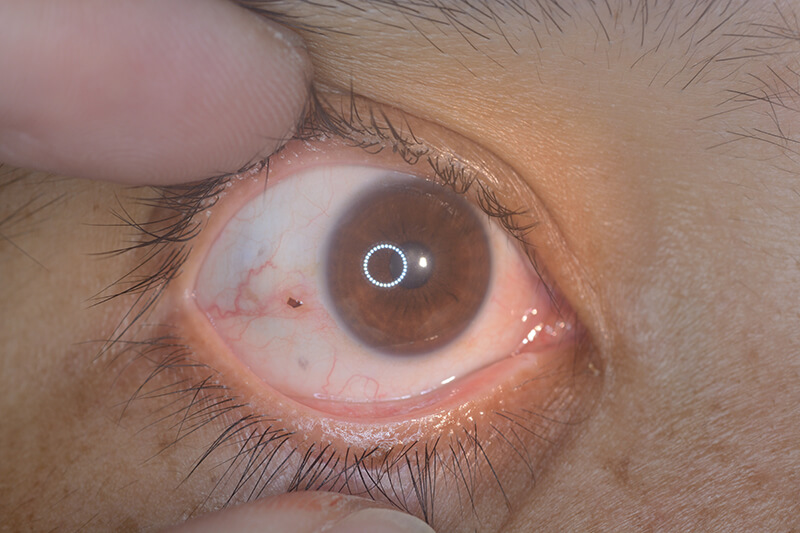Home » Cornea » Corneal Foreign Body
Corneal Foreign Body
Even after a foreign body has been removed, there is still often considerable irritation for twenty-four hours. If a particle has been removed from the surface of the eye, the raw spot left behind will feel just like the particle is still there. Because of referred pain, it may even feel like the particle is not only there, but still moving around.
After the particle has been removed, or an abrasion diagnosed, sometimes an eye drop is instilled to dilate the pupil. Much of the pain and the sensitivity to sunlight are caused by spasm of the little muscle which controls the size of the pupil. Dilating the pupil puts this muscle to rest and makes your eye feel better, but your pupil will remain large and your vision blurry for about 12 hours.
An antibiotic eyedrop will have been instilled to prevent infection. Needless to say, the eye is vulnerable to infection when there is a scratch on the surface. You will be given a prescription for antibiotic eyedrops if it looks as though your corneal defect is significant.
Covering your eye with a bandage is optional. A tight eye patch used to always be placed over the eye, but it has been shown that often people feel better without one.
By the following morning, your eye should feel about 90% better. Also, your vision should be almost back to normal by that time. If not, you should be rechecked. Instill the prescribed antibiotic eye drops four times daily for three days, even if the eye feels completely better.
Relief of pain: just removing the particle and dilating the pupil will make your eye feel much better within an hour or so, but you should also start taking Aspirin or Tylenol every four hours. An ice bag will give further relief (a wash cloth wrapped around a bag of frozen peas works well). The anesthetic eyedrops which are instilled for removal of the foreign body only last for a few minutes, but it is not advisable to keep putting them in repeatedly because they actually retard healing of the eye. So you will not be sent home with a prescription for anesthetic eyedrops.
Recurrent erosion: about 10% of the time, people have a”relapse” of the foreign body sensation in their eye within the next month or two. This is because the surface of the eye is so slick that the new cells which slide in to cover the defect do not obtain a firm footing and slough off. It will feel like you have something in your eye all over again. If you experience anything like this, come in to be checked. Some types of abrasions are particularly susceptible to this complication and for those people, We recommend instillation of a bland ocular ointment at bedtime (such as Muro 128) and an artificial tear during the day. These medications help the surface cells to stick on better and minimize friction with the ocular surface by the upper eyelid.
Summary:
- Apply ice packs as necessary
- Take mild pain reliever such as Aspirin or Tylenol
- Use antibiotic eye drops for three days







